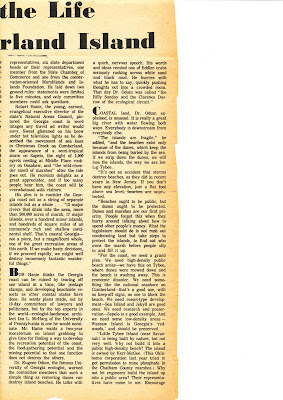Deltiology is the study and collection of postcards. If I'm discussing deltiology, your correct in thinking that I have a collection of postcards on Cumberland Island. The collection is a small one, exactly seven. Another collection of mine that I started twenty five years ago is on Savannah Georgia.
I've plundered through many a shoebox stuffed with postcards in antique stores and flea markets. When you are on the hunt for antique postcards, nothing can beat the thrill when you cross upon one that you are passionate about.
Many categorized subjects are covered by the old postcards. The specific subject that I collect is called View Postcards, which are street scenes, buildings and landscapes.
Unlike other countries, postcards printed in the U.S. in the early 1900's were printed with an undivided back. Writing was limited to the front with the design and the back for addresses. It was not until 1907 that the U.S. Government granted publishers the right to divide the back. Until then, many of the U.S. postcards were printed in Europe. After 1915, most of the postcards were printed with a white border.
Dungeness
Undivided Back
Era
The postcard above was actually mailed
to a residence in my hometown.
If you are a deltiologist, the first thing you will notice when you start to form a collection is that the older postcards were used to send brief messages like the one above and below. Its probably hard for people of my generation to imagine that the postal service actually delivered twice a day back then. Without power lines and phones, this was the way to get a short message to family and friends. In the morning, send Aunt Martha a card, "Coming for supper tonight!" That afternoon she'll send you a postcard back, "Not tonight!"
Dungeness
Divided Back
Era
1907-1915
Dungeness lower gardens
The Pool House
Stafford
Plum Orchard
Half Moon Bluff
If you know the history of the island,
you'll figure out who the above sender was.




















































